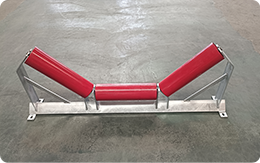 Afrikaans
Afrikaans  Albanian
Albanian  Amharic
Amharic  Arabic
Arabic  Armenian
Armenian  Azerbaijani
Azerbaijani  Basque
Basque  Belarusian
Belarusian  Bengali
Bengali  Bosnian
Bosnian  Bulgarian
Bulgarian  Catalan
Catalan  Cebuano
Cebuano  Corsican
Corsican  Croatian
Croatian  Czech
Czech  Danish
Danish  Dutch
Dutch  English
English  Esperanto
Esperanto  Estonian
Estonian  Finnish
Finnish  French
French  Frisian
Frisian  Galician
Galician  Georgian
Georgian  German
German  Greek
Greek  Gujarati
Gujarati  Haitian Creole
Haitian Creole  hausa
hausa  hawaiian
hawaiian  Hebrew
Hebrew  Hindi
Hindi  Miao
Miao  Hungarian
Hungarian  Icelandic
Icelandic  igbo
igbo  Indonesian
Indonesian  irish
irish  Italian
Italian  Japanese
Japanese  Javanese
Javanese  Kannada
Kannada  kazakh
kazakh  Khmer
Khmer  Rwandese
Rwandese  Korean
Korean  Kurdish
Kurdish  Kyrgyz
Kyrgyz  Lao
Lao  Latin
Latin  Latvian
Latvian  Lithuanian
Lithuanian  Luxembourgish
Luxembourgish  Macedonian
Macedonian  Malgashi
Malgashi  Malay
Malay  Malayalam
Malayalam  Maltese
Maltese  Maori
Maori  Marathi
Marathi  Mongolian
Mongolian  Myanmar
Myanmar  Nepali
Nepali  Norwegian
Norwegian  Norwegian
Norwegian  Occitan
Occitan  Pashto
Pashto  Persian
Persian  Polish
Polish  Portuguese
Portuguese  Punjabi
Punjabi  Romanian
Romanian  Russian
Russian  Samoan
Samoan  Scottish Gaelic
Scottish Gaelic  Serbian
Serbian  Sesotho
Sesotho  Shona
Shona  Sindhi
Sindhi  Sinhala
Sinhala  Slovak
Slovak  Slovenian
Slovenian  Somali
Somali  Spanish
Spanish  Sundanese
Sundanese  Swahili
Swahili  Swedish
Swedish  Tagalog
Tagalog  Tajik
Tajik  Tamil
Tamil  Tatar
Tatar  Telugu
Telugu  Thai
Thai  Turkish
Turkish  Turkmen
Turkmen  Ukrainian
Ukrainian  Urdu
Urdu  Uighur
Uighur  Uzbek
Uzbek  Vietnamese
Vietnamese  Welsh
Welsh  Bantu
Bantu  Yiddish
Yiddish  Yoruba
Yoruba  Zulu
Zulu ceramic pulley
The Versatility and Importance of Ceramic Pulleys in Modern Engineering
In the world of modern engineering, the pursuit of efficiency, durability, and performance has led to the rising prominence of ceramic materials. Among the innovative applications of these materials is the development of ceramic pulleys, which have garnered attention for their unique properties and advantages over traditional metal or plastic options.
Ceramic pulleys are manufactured using advanced ceramic materials that exhibit exceptional strength and resilience. One of the primary benefits of using ceramics in pulley design is their outstanding resistance to wear and corrosion. Traditional materials like steel or aluminum can succumb to rust and degradation over time, especially in harsh environments. In contrast, ceramic pulleys maintain their integrity and performance even when exposed to moisture, chemicals, and extreme temperatures.
The low coefficient of friction associated with ceramic materials also contributes to the high efficiency of ceramic pulleys. This characteristic enables smoother operation and reduced energy consumption in machinery, making them an economical choice for applications that require continuous motion. Whether in conveyor systems, motors, or industrial machines, the efficiency gained from using ceramic pulleys can result in significant cost savings over time.
In addition to performance benefits, ceramic pulleys offer an advantage in terms of weight
. They are generally lighter than their metal counterparts, which can lead to a reduction in the overall weight of machinery and equipment. This weight reduction can improve the efficiency of transport systems, decrease energy consumption, and prolong the lifespan of components by minimizing wear and tear on the entire system.ceramic pulley

Another noteworthy aspect of ceramic pulleys is their ability to withstand high temperatures. In industries such as aerospace, automotive, and manufacturing, where equipment often operates under extreme conditions, ceramic pulleys provide a reliable solution. Their thermal stability ensures that they continue to function properly without degrading or losing their structural integrity, even in environments that would typically challenge other materials.
Moreover, the aesthetic appeal of ceramic pulleys should not be overlooked. These pulleys can be produced in various colors and finishes, making them suitable for applications where visual presentation is important, such as in consumer products or visible machinery. This versatility also allows for customization to meet specific design requirements, enhancing brand identity.
As we continue to advance technologically, the demand for high-performance material solutions is likely to increase. Ceramic pulleys embody the innovation and efficiency that modern engineering strives for, making them an attractive alternative in a variety of applications. Whether in high-speed assembly lines or sophisticated aerospace systems, the advantages offered by ceramic pulleys are undeniable.
In conclusion, ceramic pulleys represent a significant advancement in the field of engineering and manufacturing. Their ability to resist wear and corrosion, combined with lightweight properties and thermal stability, positions them as a superior choice for a diverse range of applications. As industries look towards the future, the integration of ceramic materials into pulley design will undoubtedly play a crucial role in achieving enhanced performance and sustainability.
-
Revolutionizing Conveyor Reliability with Advanced Rubber Lagging PulleysNewsJul.22,2025
-
Powering Precision and Durability with Expert Manufacturers of Conveyor ComponentsNewsJul.22,2025
-
Optimizing Conveyor Systems with Advanced Conveyor AccessoriesNewsJul.22,2025
-
Maximize Conveyor Efficiency with Quality Conveyor Idler PulleysNewsJul.22,2025
-
Future-Proof Your Conveyor System with High-Performance Polyurethane RollerNewsJul.22,2025
-
Driving Efficiency Forward with Quality Idlers and RollersNewsJul.22,2025





























